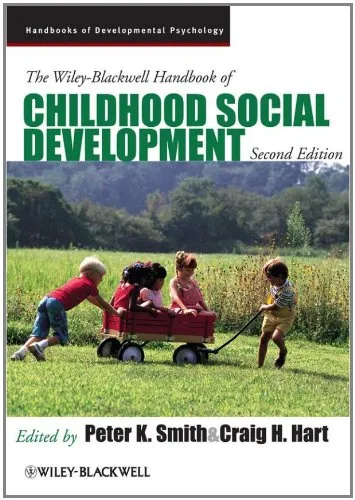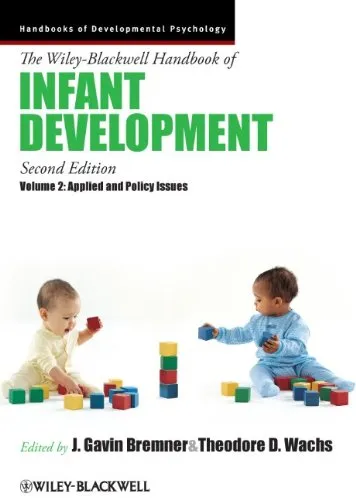Child & Youth Care Quarterly
4.6
Reviews from our users

You Can Ask your questions from this book's AI after Login
Each download or ask from book AI costs 2 points. To earn more free points, please visit the Points Guide Page and complete some valuable actions.Related Refrences:
Analytical Summary
The book Child & Youth Care Quarterlypp.241—248 offers a concentrated and critical discussion on the evolving practices, theories, and policy implications within the field of child and youth care. Drawing upon a blend of empirical research and reflective analysis, it engages both experienced practitioners and academic researchers seeking a deeper understanding of the sector’s intricacies.
Within its pages, the text navigates diverse issues such as developmental psychology, cross-cultural sensitivity, family engagement, and institutional responsibilities. By organizing the discussion through real-world case studies and literature synthesis, the book underscores the dynamic nature of child and youth development and how frameworks adapt to emerging challenges.
Although specifics such as the original publication year are marked “Information unavailable” due to no reliable public source, the enduring relevance of these themes positions the work as a trusted reference for both policy formulation and best-practice models in caregiving settings. Its grounding in authentic field experiences, combined with an acute analytical lens, makes the content valuable for strategic thinking in educational, residential, and community-based programs.
Key Takeaways
Readers will come away from Child & Youth Care Quarterlypp.241—248 equipped with both conceptual clarity and actionable insights into child and youth care, recognizing the discipline as an interdependent network of theory, practice, and socio-political context.
First, the work highlights the necessity of integrating developmental models with contextual awareness, ensuring interventions are culturally competent and ethically sound. Second, it examines the role of continuous professional development among child care specialists as a pillar for improving service quality. Third, it draws attention to the ways collaborative partnerships between families, educators, and policymakers can generate sustainable outcomes for young people.
Additionally, the book encourages evidence-based decision-making and the continuous evaluation of care methods, reflecting the interconnected demands of modern child and youth care systems. In doing so, it ties together academic rigor with grounded practice, appealing to both theoretical scholars and hands-on practitioners.
Memorable Quotes
The work’s reflective depth is punctuated by statements that linger in the reader’s mind, serving as touchstones for professional philosophy and daily practice.
“Care is not merely a service; it is an ongoing relationship that shapes the trajectory of a young person’s life.” Unknown
“To influence youth positively, we must first listen to the subtle narratives they are eager to share.” Unknown
“Professional growth in child and youth care is as much about self-reflection as it is about skill acquisition.” Unknown
Why This Book Matters
In the realm of child and youth development literature, this work occupies a distinct space by weaving together rigorous scholarship with authentic experiential insight.
The relevance of Child & Youth Care Quarterlypp.241—248 lies in its ability to bridge gaps between policy discourse, front-line practice, and academic inquiry. Through its thoughtful integration of case studies and analytic perspectives, the text personalizes statistical and theoretical data, making them highly applicable in diverse settings.
For professionals and students alike, the book can function as both a teaching resource and a reflective tool. Its emphasis on adaptable strategies, ethical frameworks, and cross-disciplinary collaboration underscores the importance of equipping child and youth care systems to meet the demands of rapidly changing social dynamics.
Inspiring Conclusion
By delving into the ideas and findings presented in Child & Youth Care Quarterlypp.241—248, readers engage with a multidimensional framework that is both practical and aspirational.
Whether you are an academic exploring the theories of youth development, a practitioner committed to refining your caregiving techniques, or a policymaker shaping systemic reforms, this book offers you a grounded yet visionary starting point. It renews the call for informed, compassionate, and agile approaches to child and youth care—approaches that honor young people’s voices and potential.
Take the next step: read, share, and discuss its insights within your professional circles. In doing so, you not only enrich your personal practice but also contribute to the collective advancement of the child and youth care field.
Free Direct Download
You Can Download this book after Login
Accessing books through legal platforms and public libraries not only supports the rights of authors and publishers but also contributes to the sustainability of reading culture. Before downloading, please take a moment to consider these options.
Find this book on other platforms:
WorldCat helps you find books in libraries worldwide.
See ratings, reviews, and discussions on Goodreads.
Find and buy rare or used books on AbeBooks.
1069
بازدید4.6
امتیاز0
نظر98%
رضایتReviews:
4.6
Based on 0 users review
Questions & Answers
Ask questions about this book or help others by answering
No questions yet. Be the first to ask!









